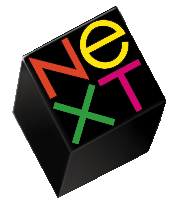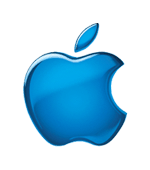|
CS 3721 Programming Languages Fall 2013 | |
Recitation 12.
Postscript Programs | ||
Week 12: Nov 18 - 22
| ||
Submit following directions at:
submissions
and rules at:
rules.
Deadlines are:
|
Postscript Programs: Study pages at the link:
12.A. Stars: You are to write a Postscript program that will produce any of a variety of "stars", similar to the ones given below:
- You should create the star centered at the origin.
- You can then translate the center of the star to wherever you want it before rendering it. (In my pictures I did all 6 at once.)
- The radius of the star should be exactly 100 points.
- The star should should be drawn with a function (perhaps named star), that uses two input parameters on the Postscript stack: n, the number of star "tips", and m, the number of tips to skip ahead in drawing a line. Thus the six stars above have parameters (left-to-right and top-to-bottom) 5 2, 10 3, 20 6, 20 9, 12 4, and 18 6. In the second star, with parameters 10 and 3, there are 10 tips, and you draw a line from each tip to the tip that is 3 ahead in the sequence of tips. In your program, the second star might be called with code like: 10 3 star.
- You must use a for loop (or some other loop), so that your program will work for any reasonable input. (You don't need code to verify "reasonable input".)
- If you use code that you get from some other source (wherever it might be from: the web, textbooks, my own materials, or another student), then you must cite this source in the code that you submit.
- There are many ways to complete this assignment.
- Perhaps the simplest method is to draw each line, one at a time. (This approach was used in the image at the left above. It works well, but it ends up with flat star "tips".)
- Alternatively, you could try to mimic the star program presented in the course and in the text. That approach is tricky, and does the star as a single path or as several paths. (With this more difficult approach, the star tips are pointed.)
- You could calculate the tips of the star, using simple equations, so that (100, 0) can be one tip, and locations of the others depend on how many there are (divide 360 by n to get the angle between tips), and then use simple formulas (involving sin and cos) for the locations of other tips.
- After drawing one line, one simple method (but by no means the only one), is to use rotate by the angle between tips to get the other lines.
- Notice that stars 3, 5, and 6 above are different from the other 3 in a significant way. (The red line is a hint about this difference.) For some ways of drawing the stars, this difference won't matter, while for others it will.
- Any use of translate or rotate (or any other change of the graphics state) enclosed inside the Postscript commands gsave and grestore will not have an effect outside these enclosed commands. So you can do a rotate after gsave, do some other stuff, and then after a grestore the effect of the rotate is reversed. This use of gsave and grestore is illustrated and explained at the end of the "star" example: Star

|

| |
| Click Image for .pdf | Click Image for .pdf |
Detailed Requirements: Your program should conform the the following requirements:
Hints and Suggestions: Here are a few hints:
12.B. Business Card: For this recitation, you are to write a program in Postscript that will print a "business card", either for you, or for some fictitious individual or company. Graphic art often uses a principle of "less is more", meaning that a simple design is often more satisfactory than a more complex one. Here are some examples, some simple, some not so simple.



 |
-
However, this is not an art assignment, and you are not being graded
on "good graphic design." Instead I want you to experiment with
complicated Postscript code to help learn the language.
Here are requirements for the recitation:
- The initial card must be exactly 4 inches by 7 inches. (That is, the card must be exactly 288 points by 504 points.)
- The outer 4 inch by 7 inch boundary must be stroked with a line of width 3 points.
- With one run, translating the card if necessary, print a single copy of your card on a sheet of paper. Again, this must be 4 inches by 7 inches without scaling.
- In a separate run, using a scale factor of 0.5 in each direction, produce at least 5 copies of the same card at half size, that is, of size 2 inches by 3.5 inches. The Postscript code that produces these 5 copies must employ a Postscript loop. (See pages 51-52 and Chapter 7 of the Blue Book (PDF, 847k).)
- At least one piece of text on the card must either be centered or right justified, using the stringwidth function, so that the text would remain centered or right-justified even if the font size is changed. (See the Blue Book, pages 42-43 for right justification, and pages 58-59 for centering. See also my handout with a card on it.)
- The use of some ``graphic object'', e.g., some picture made up of one or more paths. For example, a recursive structure like that on pages 73-75 of the Blue Book would be interesting.
- Use some color, although your final printout doesn't have to be on a color printer.
- The use of an outline around characters in a string. (See the example on page 98 of the Blue Book.)
- The use of a clipping path. (See the Blue Book, pages 103-104.)
Examples of Cards: Two cards from the Blue Book plus one of my own:
What to Turn In: You should include the Postscript source for your stars and your business card programs. You should also attach a PDF version of the business card and one or more PDFs of the stars. (Don't attach .ps files, but .pdf ones.)
Revision date: 2013-11-18. (Please use ISO 8601, the International Standard Date and Time Notation.)
